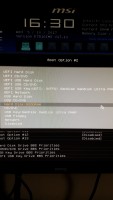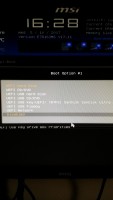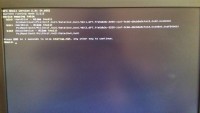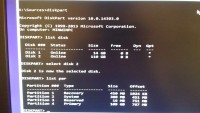Hello,
I have a HDD drive with windows 10. The disk has been formatted and disconnected from the port. I connected a new SSD to SATA. I set about creating a USB 10 for installation on the pendrive (via the Rufus program). In bios, this pen drive appears to me as UEFI and without ordinary, and the SSD disc detects only without UEFI. I tried to install SSD in all the ways, I formatted SSD on MBR and GPT and when windows installer completes the installation and reboots, I boot from pendrive from the new windows installer and I change the boot menu to boot from the SSD drive, the error "Reboot and Select proper Boot device or Insert Boot Media in selected Boot device and press a key ". For sure I came back to HDD I installed from the same pendrive system and after installation it was enough to set the Windows boot manager menu in boot and the system starts. How to deal with this SSD and install Windows 10 on it?
Equipment:
The MSI Z97-G43 motherboard
SSD Goodram CX300 128GB
CPU i5-4690K
GPU Strix GTX 970 4GB DDR5
RAM Savage 2x4GB 2400MHz
HDD Caviar Blue 1TB 7200RPM
Pro series TS550W power supply
I have a HDD drive with windows 10. The disk has been formatted and disconnected from the port. I connected a new SSD to SATA. I set about creating a USB 10 for installation on the pendrive (via the Rufus program). In bios, this pen drive appears to me as UEFI and without ordinary, and the SSD disc detects only without UEFI. I tried to install SSD in all the ways, I formatted SSD on MBR and GPT and when windows installer completes the installation and reboots, I boot from pendrive from the new windows installer and I change the boot menu to boot from the SSD drive, the error "Reboot and Select proper Boot device or Insert Boot Media in selected Boot device and press a key ". For sure I came back to HDD I installed from the same pendrive system and after installation it was enough to set the Windows boot manager menu in boot and the system starts. How to deal with this SSD and install Windows 10 on it?
Equipment:
The MSI Z97-G43 motherboard
SSD Goodram CX300 128GB
CPU i5-4690K
GPU Strix GTX 970 4GB DDR5
RAM Savage 2x4GB 2400MHz
HDD Caviar Blue 1TB 7200RPM
Pro series TS550W power supply






